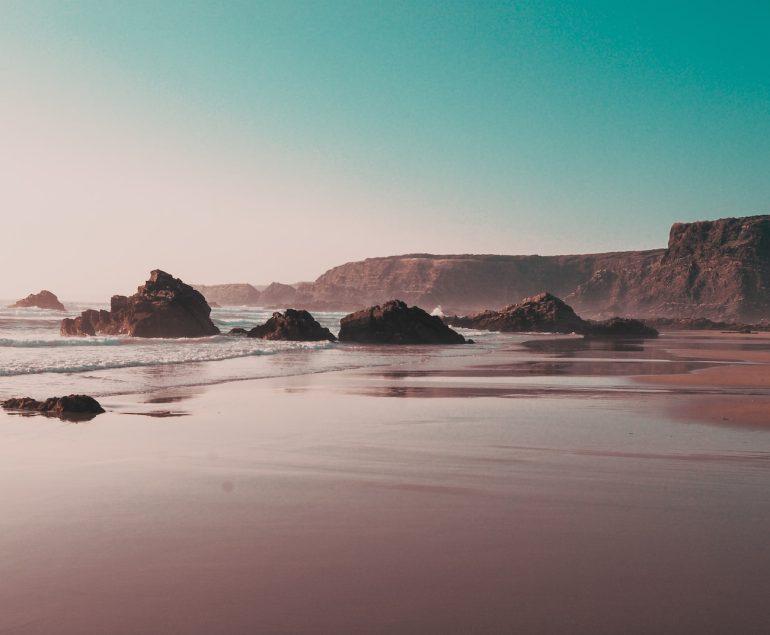The unique, picturesque, and endearing fishing neighbourhood of Portugal.
Aveiro is a city on the west coast of Portugal built around a lagoon named Ria de Aveiro. It’s recognised by its canals piloted by colourful boats (Barcos moliceiros), originally used to gather seaweed.
While the adjacent beaches draw thousands throughout the summer, the legacy and lively culture continue to draw visitors outside of the peak vacation season. Aveiro dubbed the “Venice of Portugal,” is known for its maze of canals lined with vividly coloured boats and is unquestionably one of the country’s most romantic attractions.
- Discover the Art Nouveau style.

Along Aveiro’s major canal, a number of buildings with façades inspired by the romantic Art Nouveau period have earned the city the reputation as an open-air Art Nouveau museum. These architectural masterpieces stand out because of their vibrant hues, flowing and curving forms, and wrought-iron decorations.
Make a point of visiting the nearby Art Nouveau museum (Museu de Arte Nova) and Tea House (Casa de Chá).
- Capture unforgettable images of Costa Nova.

Barra and Costa Nova are both worth seeing, although the latter is a little more unique owing to the rainbow-striped fishermen homes in the “downtown” area. These beautifully charming structures, reminiscent of dollhouses, were originally used to store fishing gear, but some are now utilised as lodging.
- Visit the fish market at its busiest hours.

Nothing compares to strolling through a Portuguese fish market (Mercado do Peixe) at its peak hours (usually early in the morning). While the odours, noises, and views may be a little overpowering, they are as authentic as they get, and the fish market in Aveiro is unique in that it also features an on-site restaurant. The market, which dates all the way back to the 18th century, was reconstructed at the turn of the twentieth century and serves as a location to purchase and consume locally caught fresh fish (the restaurant is on the second floor and takes in views of the canals).
Costa Nova’s fish market is just around the corner from the Costa Nova Hotel.
- Visit The Aveiro Museum and the Sé CathedralPortugal’s religious heritage is a stunning part of the culture, and the Aveiro Cathedral (Sé Cathedral) is, therefore, a top landmark in the city. Originally built in the 15th century, it was a local Dominican convent and only one wall of the original church remains today. Due to renovations and restorations over the centuries, the architecture reflects different styles including Baroque and Gothic.

The Aveiro Museum is located across the street from the Sé Cathedral. It is a magnificent religious museum dedicated to the life of a Portuguese princess. Originally constructed in the 15th century, the structure served as the Convent of Jesus of the Dominican Order, where Princess Joanna spent most of her life. The museum’s finely detailed marble tomb is one of the first things visitors encounter upon entering, but it also has a religious collection that includes (but is not limited to) paintings, sculptures, and old furniture. Additionally, there is an ornately decorated chapel and central courtyard where the convent’s nuns pray.
- Pay a visit to the beach
Although Aveiro is frequently referred to be a summer resort, the city is not located on the coast, and the nearest beaches are around 10 kilometres away. Barra and Costa Nova are the names of the two beach “towns,” the latter of which is slightly further along the peninsula. They are, however, easily accessible through public transit, and a daily bus route ensures that traffic flows into and out of this sandy stretch. Not only are they ideal locations for sunbathing and water activities, but the restaurants are also well-known for providing fresh seafood and traditional local specialities.
- Make reservations for a moliceiro ride.

The front of a beautifully-painted Moliceiro | © François Philipp / Wikimedia Commons
Without a doubt, a trip on the gondola-like boats known as moliceiros is a highlight of visiting Aveiro. They are bigger than their Italian counterparts and are accessible year-round to delight visitors. Not only is booking a moliceiro ride a classic experience, but it’s also a cost-effective one.




